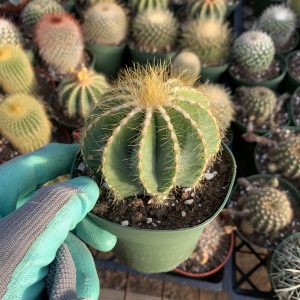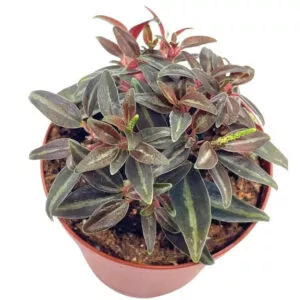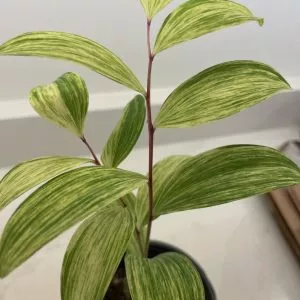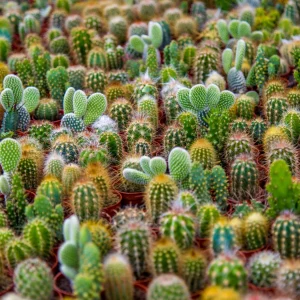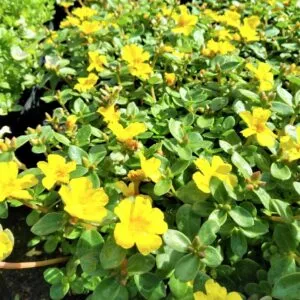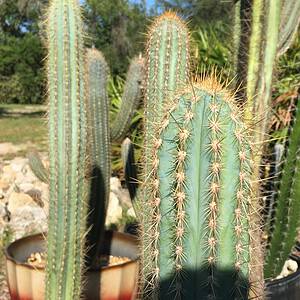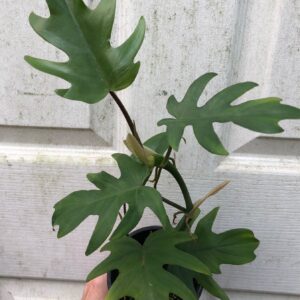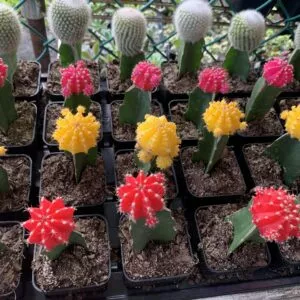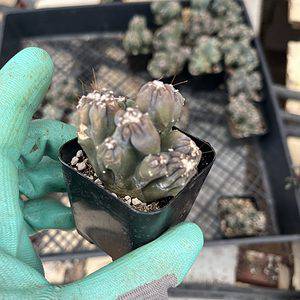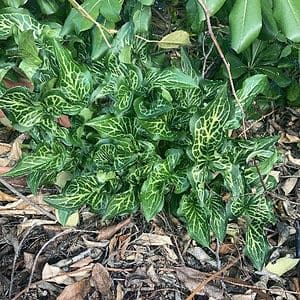No products in the cart.
Table of Contents
Whether you’re just a curious plant enthusiast or a grower guided by the Chinese zodiac who wishes to indulge in green charms to deflect negativity inside your home, Plantly got your back!

As we welcome the Chinese new year with prosperity and abundance in mind, help yourself to the list of a few of the most adorable house plants you can get a hold of with a promise to bring luck and invite good fortune through their fresh and nature fitting vibes.
Money Tree

Money trees (Pachira aquatica) are a well-known bearer of luck and prosperity. This braided plant has been well cultivated since the 1980s, originally by a truck driver in Taiwan. It has since then garnered fame in Japan and several parts of Asia as a symbol of fortune that it becomes well associated with the Chinese practice of Feng shui.
A fine balance of direct and indirect sunlight gives the money tree plant a chance for more favorable growth. This may be achieved by the occasional rotation of the plant to ensure an equal light distribution if grown indoors.
If treated as an outdoor plant, it can tolerate early sun or late in the afternoon. Just make sure to put this lucky plant near a shade or a tree.
Be sure to provide the plant with a suitable growing medium. Preferably a nutrient-rich potting mix incorporated with some sand for good drainage and aeration. Water every one to two weeks and allow the plan to settle in a warm humid environment, at least 65 and 75 o F.
Lucky Bamboo

Lucky Bamboo (Dracaena sanderiana), although may appear morphologically similar to true bamboo, belongs to the plant family Asparagaceae. A commonly reared houseplant due to their ease of care due and notable resiliency.
For years, the plant became a staple for traditional activities related to Feng shui and is a well-beloved gift charm. If placed right, which is usually according to the Chinese zodiac sign of the head of the household, the plant is believed to promote good fortune, love, and good health.
To keep your lucky bamboo happy and vibrant, be sure to maintain a clean container, especially if it’s grown in water. Clean at least once every two months and provide fresh water weekly to prevent the formation of algae and the proliferation of mosquitoes.
Lucky bamboo grows favorably under bright indirect light and tends to grow larger. If it does, you may need to re-pot your plant to a much bigger one. Do this by carefully digging up the plant and gently placing it in its new container, making sure that the roots go beneath the newly washed pebbles.
Add in your clean water in a manner that will cover the roots but not too high that it will soak up the stalks.
In stock In stock In stock In stock
$10.00
Sold By:
Cacti and Exotica
Parodia magnifica—Balloon Cactus
Rated 4.98 out of 5 based on 59 customer ratings00
Sold By:
Cacti and Exotica
$6.99
Sold By:
BubbleBlooms
Peperomia Metallica, 2 inch, Rare Pep
Rated 4.81 out of 5 based on 279 customer ratings01
Sold By:
BubbleBlooms
$8.99
Sold By:
Cacti and Exotica
Mammillaria marksiana
Rated 4.98 out of 5 based on 59 customer ratings00
Sold By:
Cacti and Exotica
$20.00
Sold By:
Helios Plants
$27.00Variegated Solomon’s Seal (Polygonatum) “Fireworks”
Rated 4.73 out of 5 based on 120 customer ratings01
Sold By:
Helios Plants
Pussy Willow

For this year of the water tiger, the Pussy Willow (Salix discolor) is listed among the lucky houseplants that may invite prosperity into your home, because why not? After all, the silver furry catkins of pussy willow give an early glimpse of spring. Hence, a mark of a new beginning.
The pussy willow has a compact weeping habit and is thus suitable for small gardens and indoor plants setup. It grows to around 1.8-2.4m high and spans out to at least 1.5 m. They grow optimally with full sun exposure but will also thrive in light shade conditions, provided it will be in moist fertile soil with good drainage.
Ideally, a pussy willow tree is planted in autumn, so it may become well-established before the growing season. In the summer, regular watering ensures favorable growth.
It is also important to thin out the plant from time to time by removing dead stems and spent flowers. This practice would certainly keep your plant healthy and vibrant.
Jade Plant

Jade plant (Crassula argentea) is a well-known houseplant believed to give off a positive energy that attracts wealth and good relationships.
This adorable succulent, which is native to South Africa, has vibrant green leaves adorned with small pink or white flowers. The plant is characterized by its miniature, tree-like appearance, making it a truly fascinating decorative houseplant.
Propagating Jade plants may be done by taking leaf or stem cuttings of at least 2-3 inches in length. Allow the cuttings to sit for several days in a warm place to induce callus and develop roots.
When potting Jade plants, be sure to choose a wide and sturdy pot with adequate depth. Use a slightly moist, well-draining soil mix. An ideal combination would be a 2:1 ratio of regular potting mix and perlite.
After planting, avoid watering immediately. Give your Jade plant at least 3-5 days to acclimatize. This allows the roots to settle and recover from planting shock. Jade plants optimally thrive at daytime temperatures of 65 to 75 ° F, and nighttime temperatures from 50 to 55 ° F.
Orchids

Orchidaceae is a widespread family of flowering plants with vibrant blooms that are oftentimes fragrant. A staple to every Chinese new year guide to harnessing luck and prosperity. They are also known to promote harmony in relationships.
Most orchids require watering once a week and need to be in a spot that receives an ample amount of light.
You need a basic orchid mix that consists of coarse perlite and sphagnum moss. Charcoal may also be added to remove impurities and sustain nutrients needed for growth. A typical orchid fertilizer may also be fed to the plant once every few weeks.
Orchids tend to bloom at least once a year. To induce flowering, cut off the old flower stalk at the base and have the plant settle in a room with an ambient temperature of 10º C lower, particularly at night. The ideal temperature for most orchid species is between 10° to 27° C (50° and 80° F).
Peperomia ‘Baby Rubber Plant

Dubbed as the 2022’s houseplant of the year, Peperomia obtusifolia, or baby rubber plant has been grown and distributed well since the 1930s. Native to South & Central America, Peperomia plants are often found thriving on the forest floor, hence a specimen well adapted to lower light conditions.
The Peperomia Obtusifolia is characterized by its glossy thick leaves and upright stems. The spoon-shaped foliage can store water and appears to be mildly swollen when it’s raining. The plant then shrivels at the onset of drought. Some varieties may have some contrasting green to off-white marbling color.
Given their native habitat, peperomia plants prefer bright indirect light. The watering cycle is usually once every two weeks and when the potting soil is completely dry to the touch.
In stock In stock In stock (can be backordered) In stock
Free Shipping
$8.96
Sold By:
CZ Grain
Cacti Seeds Mix – 50 Seeds – Cactus Species Mix – Ships from Iowa, USA – Grow Exotic Succulent Cacti
Only 900 available and it’s in 2 people’s basket Rated 4.60 out of 5 based on 156 customer ratings00
Sold By:
CZ Grain
$65.00
Sold By:
Via Citrus
$75.00Meyer Lemon Citrus – Indoor/Outdoor Citrus
Only 93 available and it’s in 5 people’s basket Rated 4.92 out of 5 based on 237 customer ratings76
Sold By:
Via Citrus
Free Shipping
$17.99
Sold By:
Gar-Zen Botanical Design
Purslane “Lemon Drops” Edible Herb Ships Free.
Only 22 available and it’s in 1 people’s basket Rated 4.86 out of 5 based on 49 customer ratings00
Sold By:
Gar-Zen Botanical Design
$34.99
Sold By:
Succulent Oasis
$40.99Large Bonsai ‘Money Tree’ Plant
Only 5 available and it’s in 1 people’s basket Rated 4.84 out of 5 based on 352 customer ratings00
Sold By:
Succulent Oasis
Madagascar Periwinkle

The Madagascar Periwinkle (Catharanthus roseus) made it to the list of lucky Chinese new year plants due to their delicately simple charm, which also happens to be a symbol of faithfulness and trust. The plant’s native habitat is in South Africa but is also well distributed in semi-arid regions, all year round.
Characterized by their glossy foliage and starry flowers that come in shades of white, pink, and bluish violet. Generally, the plant is tolerant to varying conditions and may be grown as a perennial or an annual.
While the periwinkle develops seeds, the most common and reliable means of propagating them is through cuttings. Dedicate a growing space, such as raised bed amended with sand for added texture and drainage.
The plant may also be planted on slopes due to its shallow fibrous root system that clumps up soil which can prevent erosion.
Peace Lily (Spathiphyllum)

Peace lilies (Spathiphyllum) are tropical, evergreen plants that thrive well with dappled sunlight and sufficient moisture. They can grow up to 4 feet tall and are most notable for their shiny dark-green leaves and specialized leaf bract that grows over the main flowers.
Peace Lily is known to bring luck, harmony, and wealth. They are a perfect gift for house visits or if you simply wish to get in tune. Add to that, their ability to purify and improve the quality of the air you breathe.
Peace lilies prefer a bright, indirect light and must be established in well-draining, slightly acidic-rich soils. Water only once the soil feels dry to the touch and be sure to wipe the leaves from time to time to retain their vibrance.
Chrysanthemums

Chrysanthemums are among the few well-beloved lucky plants across Asia. They symbolize longevity and well-balanced life.
Being a sun-loving plant, chrysanthemums would grow optimally provided that there’s adequate light for at least 6 hours a day. A well-draining soil is also a key, and the ideal soil mix should consist of organic materials or compost and peat moss.
As with most perennials, chrysanthemums tend to grow larger with the years and can easily fill in any space in just a matter of time. Hence, proper spacing is an essential step to keep them healthy. Add to that, consistent watering must be observed and is best done early in the morning – directly to the base of the plant.
In stock In stock In stock
$17.95
Sold By:
Orchid Stuff Plus
$23.95Stunning Snake Plant Sansevieria Zeylanica in a 6 inch pot!
Only 2 available and it’s in 1 people’s basket Rated 5.00 out of 5 based on 1 customer rating00
Sold By:
Orchid Stuff Plus
$25.95
Sold By:
SunSoul Plants
$42.95Philodendron Mayoi Plant in 4″ pot, philodendron Tahiti
Rated 4.87 out of 5 based on 98 customer ratings00
Sold By:
SunSoul Plants
$29.99
Sold By:
BubbleBlooms
Grafted Moon Cactus / Ruby Ball Cactus Set of 4 different colors
Rated 4.81 out of 5 based on 279 customer ratings00
Sold By:
BubbleBlooms
Njoy Pothos

Coming from the Araceae family, the Njoy pothos (Epipremnum pinnatum ‘Njoy’), known for their waxy oval green leaves and creamy white variegation, are certainly in demand every lunar new year.
Perfect for career-oriented people who desire to attract luck and more opportunities in their life. Their trailing stems would look divine in hanging baskets. Just be sure to provide bright indirect light and avoid overwatering.
Final Thoughts
The wide and diverse Chinese tradition allows us to celebrate the new year with much grandeur and color, so much more so with the excitement of knowing the lucky plants that may help set the odds in our favor.
With that, visit Plantly, for more options and plant care guides!
Whether you want to buy, sell or simply reach out to other plant enthusiasts, Plantly is the right place to be!
-
$7.00Sold By: Smoot's Farm
In stock
Aloe Aristata Lace Aloe 2″ Pot Live Plant
Rated 4.89 out of 5 based on 27 customer ratings00Sold By: Smoot's Farm -
$9.99Sold By: Succulent Oasis
In stock
Medium Succulent Plant – Crassula Conjuncta.
Only 39 available and it’s in 2 people’s basketRated 4.84 out of 5 based on 352 customer ratings02Sold By: Succulent Oasis -
$4.89Sold By: Cacti and Exotica
In stock
Cactiandexotica Cereus forbesii | Ming thing | 2″ Pot
Rated 4.98 out of 5 based on 59 customer ratings00Sold By: Cacti and Exotica -
Free Shipping$18.00Sold By: Bay Urban Habitat
Only 1 left in stock
Italian arum bulbs aka winter caladium
Only 1 available and it’s in 1 people’s basketSold By: Bay Urban Habitat
